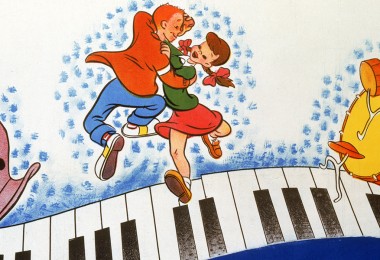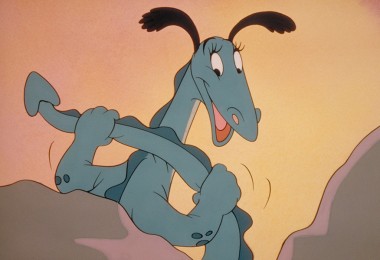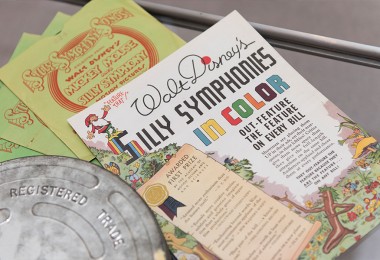By Steven Vagnini
This spring, D23 invites fans to take an inside look at a few beloved rain-and-flower sequences for insight into these memorable moments in Disney animation. From feature films like Bambi and Alice in Wonderland to shorts like Ferdinand the Bull and Disney•Pixar’s The Blue Umbrella, the fan in all of us will learn a lot from the flowers… and the rain!
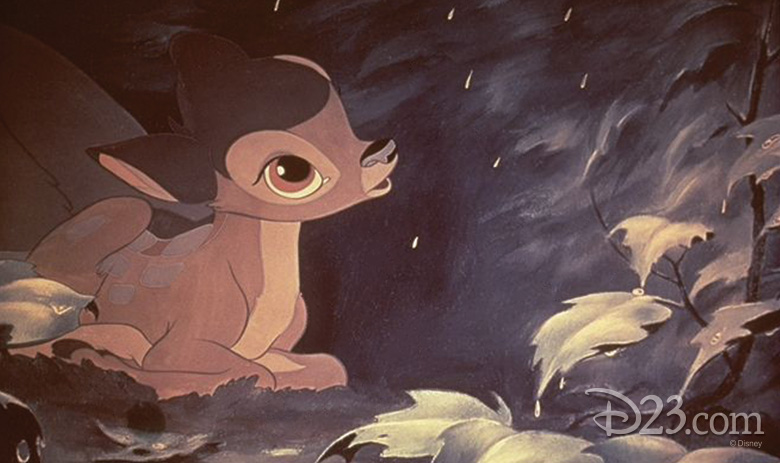
“Little April Shower”—Bambi (1942)
- The origins of this memorable Disney rainstorm, brought to life musically by lyricist Larry Morey and composer Frank Churchill, can be traced to an early proposed forest sequence in which Bambi and his mother encounter the mysterious sound of wind humming through the leaves. The Studio staff evolved the idea, giving a voice to a gurgling brook and later to falling raindrops. Ultimately, to bring more entertainment and drama to the film, the story team decided to depict a powerful thunderstorm.
- In their book Walt Disney’s Bambi: The Story and the Film (1990), Disney Legends Frank Thomas and Ollie Johnston described how the the music of the sequence “mimicked falling raindrops that at first keep Bambi from his sleep and then provide a lullaby.”
- To help inspire the look and feel of the April shower, the Disney staff studied snapshots taken by photographer and artist Maurice “Jake” Day, who was enlisted to shoot scenes of his Maine woods in a variety of weather conditions and seasons.
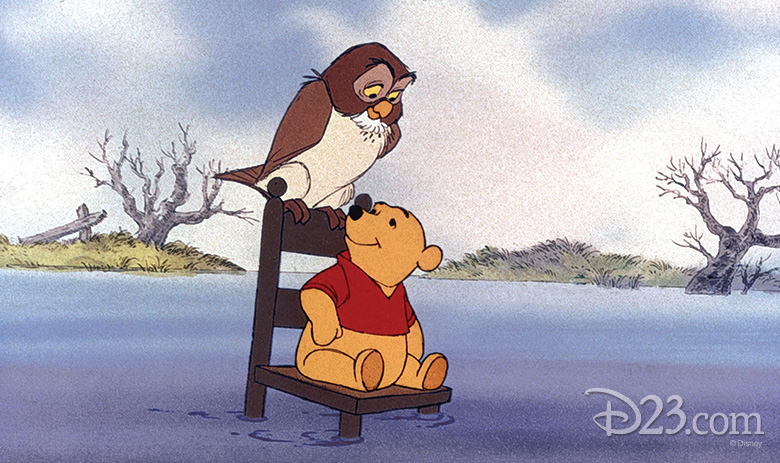
“The Rain, Rain, Rain Came Down, Down, Down”—Winnie the Pooh and the Blustery Day (1968)
- Another particularly rainy scene—this one from Disney’s 1968 Winnie the Pooh featurette and, later, The Many Adventures of Winnie the Pooh (1977)—would feature a memorable tune by songwriters Richard M. and Robert B. Sherman: “The Rain, Rain, Rain Came Down, Down, Down.”
- The storyline for Winnie the Pooh and the Blustery Day (1968) was derived from chapter 9 of Winnie-the-Pooh, “In Which Piglet Is Entirely Surrounded by Water,” and other chapters of the Winnie the Pooh books by A. A. Milne.
- Buddy Baker, who composed more than 200 pieces for Disney films, TV shows, and theme parks, scored the rainy sequence. Although he retired from the Studio in 1983, Buddy returned in the late 1990s to score the soundtrack to The Many Adventures of Winnie the Pooh attraction for Walt Disney World. As part of the attraction, guests hear the classic song in “The Floody Place,” where their Hunny Pot vehicles tilt and bob along rushing currents. To re-create the film’s music for the ride-through experience, Buddy referenced original music lead sheets from the 1960s. And here’s another fun musical fact: more than half of the players in the attraction’s 35-piece orchestra had performed for the original Winnie the Pooh films three decades earlier!
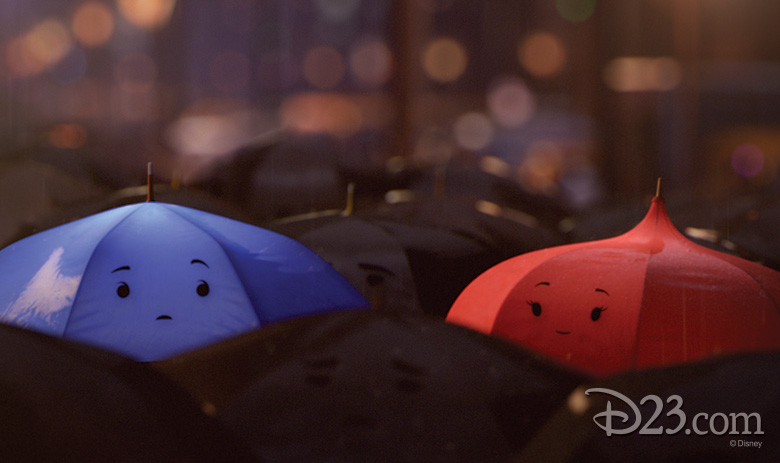
The Blue Umbrella (2013)
- In this 2013 Disney•Pixar short, as the rain starts to fall, a city comes alive with the sounds of “dripping rain pipes, whistling awnings, and gurgling gutters.” Amid this bustling setting, audiences’ hearts melt as a pair of umbrellas falls in love.
- The innovative short film originated in Pixar’s camera and staging department, as opposed to the animation or story departments. The storyline popped into the mind of director Saschka Unseld while spotting a broken umbrella on the side of a San Francisco street during a rainy day walk.
- At one point, the production team envisioned the city serving the role of a “Greek Chorus,” initially signing to celebrate the rain and later performing songs of love and mourning.
And now, our discussion of showers gives way to some beautiful Disney flowers…
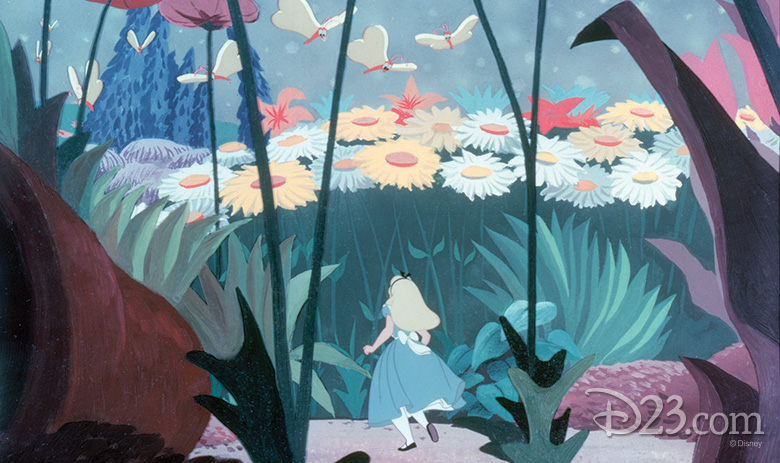
“All in the Golden Afternoon”—Alice in Wonderland (1951)
- Some of the most memorable (and talkative) flowers in the Disney film canon come from the “Garden of Live Flowers” in the 1951 animated feature. There, dizzy daffodils, lazy daisies, and other beautiful blooms perform “All in the Golden Afternoon”—a song whose title was derived from the Lewis Carroll poem featured in his 1865 classic, Alice’s Adventures in Wonderland.
- Studio artist Mary Blair used her unique color stylings to create a variety of concept pieces that would strongly influence the final look of the film and its characters. Among her many depictions of personified flowers was one that never made it into the final picture—crabgrass!
- A variety of talented actors gave their voices to the flowers. English stage and film actress Doris Lloyd—who performed roles in more than 125 films, including a cameo part in Mary Poppins (1964)—provided the voice of the Rose. Other adult flowers were voiced by Lucille Bliss, legendary voice actress for countless animated roles (starting with Anastasia in 1950’s Cinderella). And ever wonder who voiced the adorable pansies? They were the children of Alice in Wonderland director Ham Luske. (One of his children—Tommy—would go on to give Michael Darling his voice in 1953’s Peter Pan.)
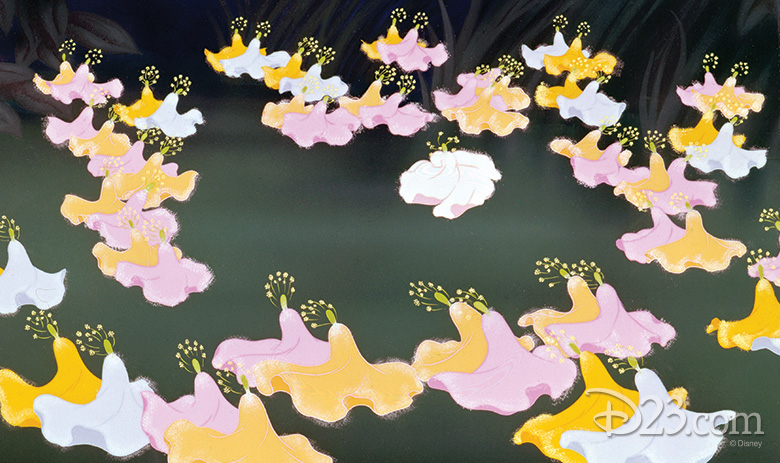
“The Nutcracker Suite”—Fantasia (1940)
- To keep from getting too far into the weeds, let’s just say we see no nutcrackers in Fantasia’s “Nutcracker Suite.” Instead, the segment featuring Tchaikovsky’s music was envisioned by Walt and his staff as a ballet of nature in six scenes, including dances by troupes of blossoms, thistles, orchids, and milkweed.
- In a 1939 story meeting, Walt expressed his abstract vision for the dancing plants and flowers: “It’s like something you see with your eyes half-closed. You almost imagine them. The leaves begin to look like they’re dancing, and the blossoms floating on the water begin to look like ballet girls in skirts.”
- According to artist and historian John Culhane in Walt Disney’s Fantasia (1983), models for the dancing thistles were found in a parking lot near the Disney Studio and were evidently helpful during the film’s production!
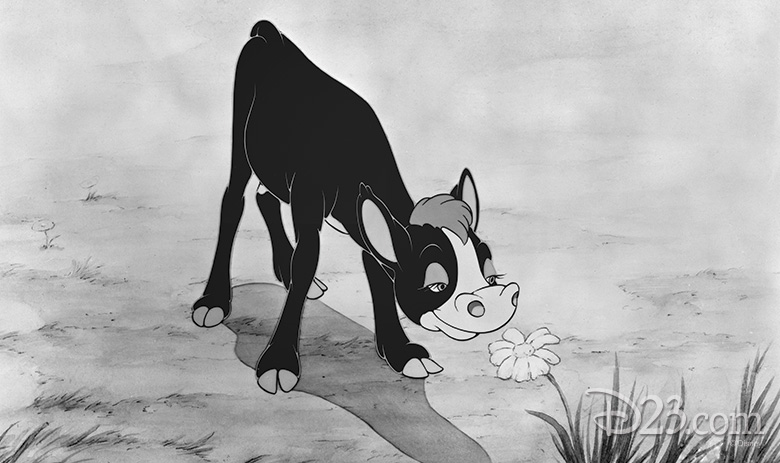
Ferdinand the Bull (1938)
- In this special cartoon, originally planned as a Silly Symphony, Ferdinand prefers to sit around and smell the flowers. The short was based on The Story of Ferdinand by Munro Leaf—a best seller shortly after its release in 1936.
- Besides enjoying the flowers, keep an eye (and ear) out for several cameos in the short. In the bullfight scene, several Disney Studio staff members are caricatured on-screen, including Walt Disney as the matador and Ward Kimball as the mozo de espadas. And listen closely: Animator Milt Kahl provided the voice of Ferdinand’s mother, while Ferdinand’s few lines were performed by Walt himself!
- The song “Ferdinand the Bull” was composed by Albert Hay Malotte, with lyrics by Larry Morey. Malotte, who scored several popular Disney films of the era, is perhaps best known for writing “The Lord’s Prayer.” Meanwhile, Larry Morey is regarded in the Disney community for the classic songs he wrote for Snow White and the Seven Dwarfs (1937), So Dear to My Heart (1949), and Bambi (1942)—including that “Little April Shower.”



